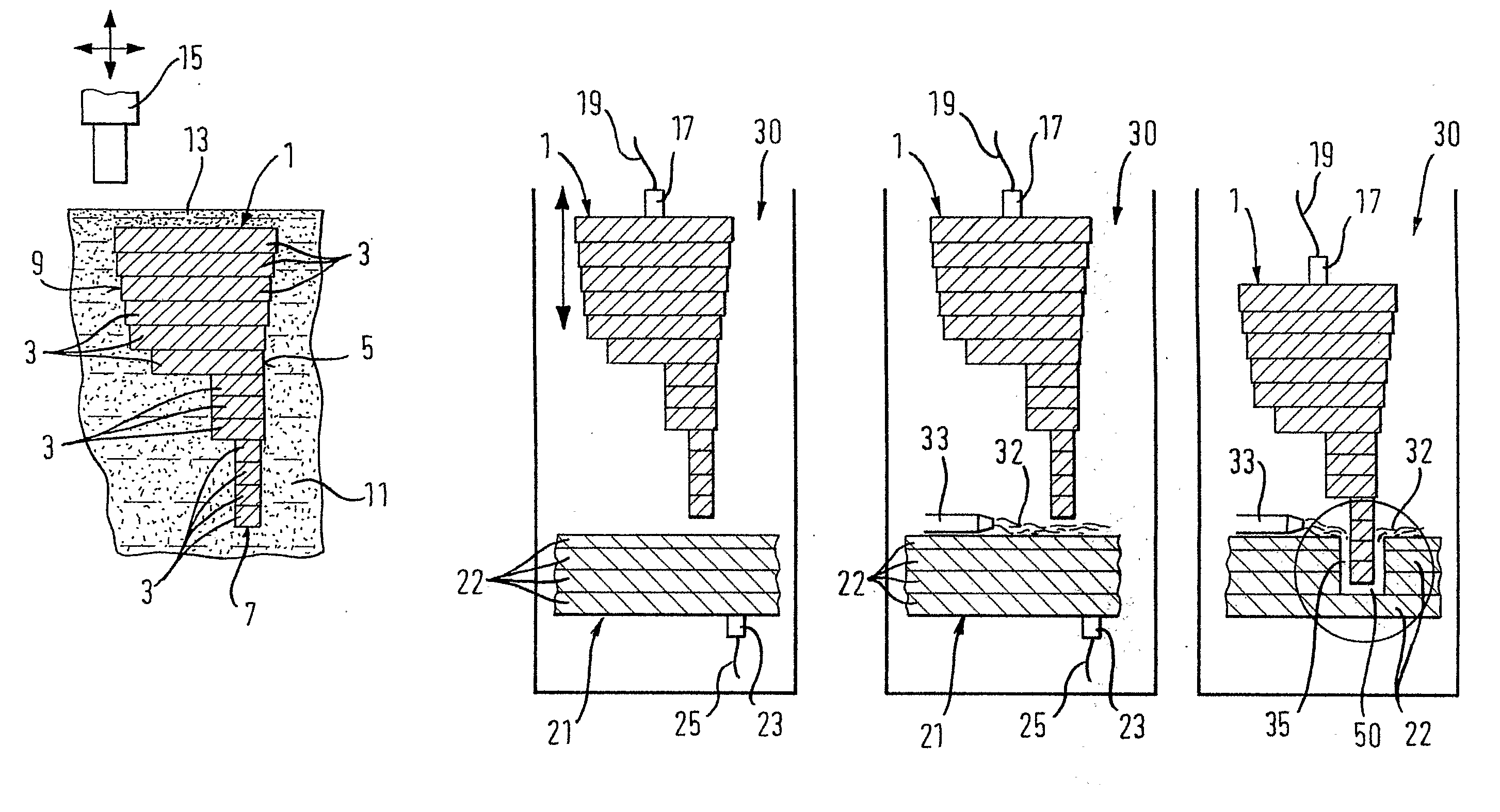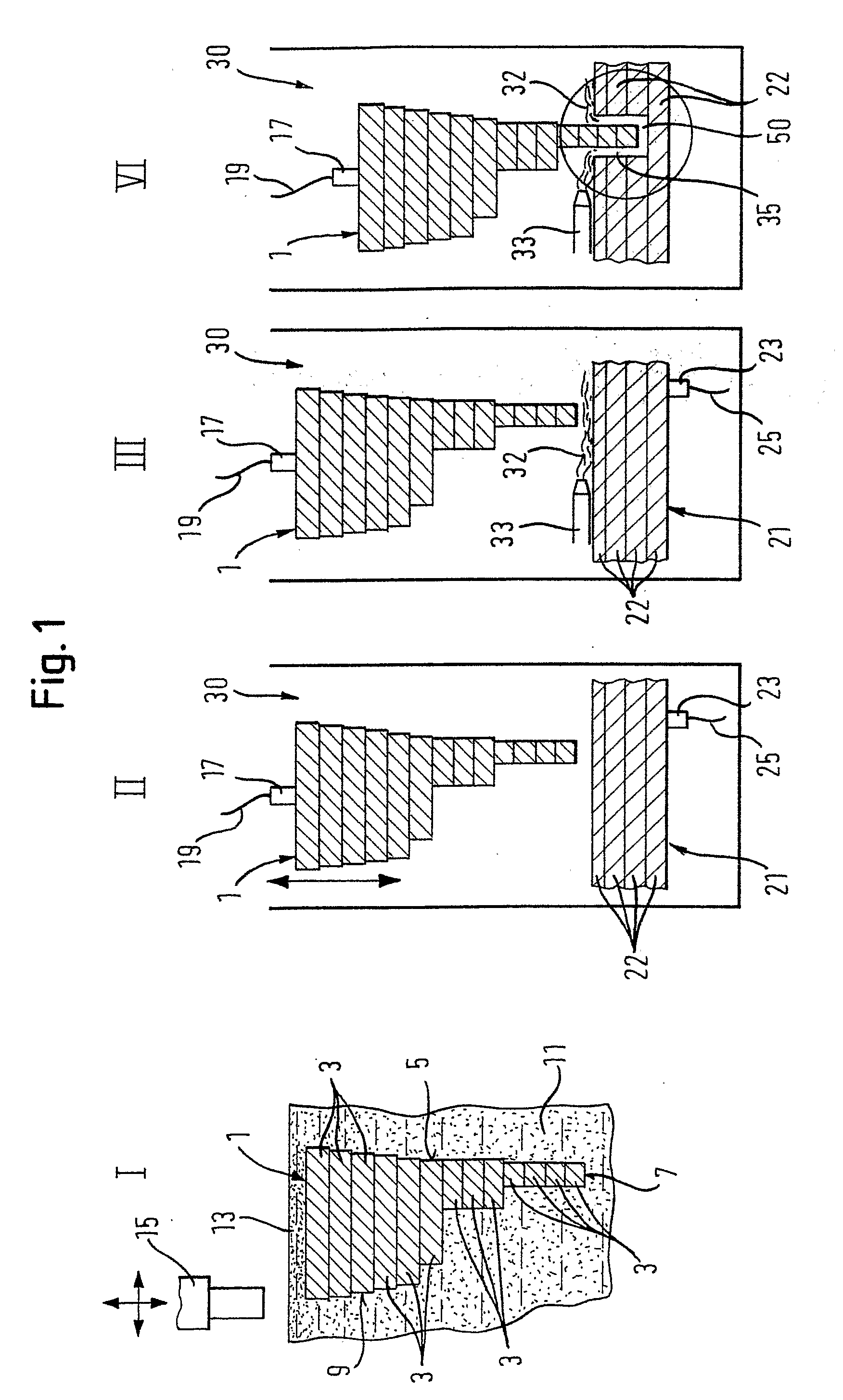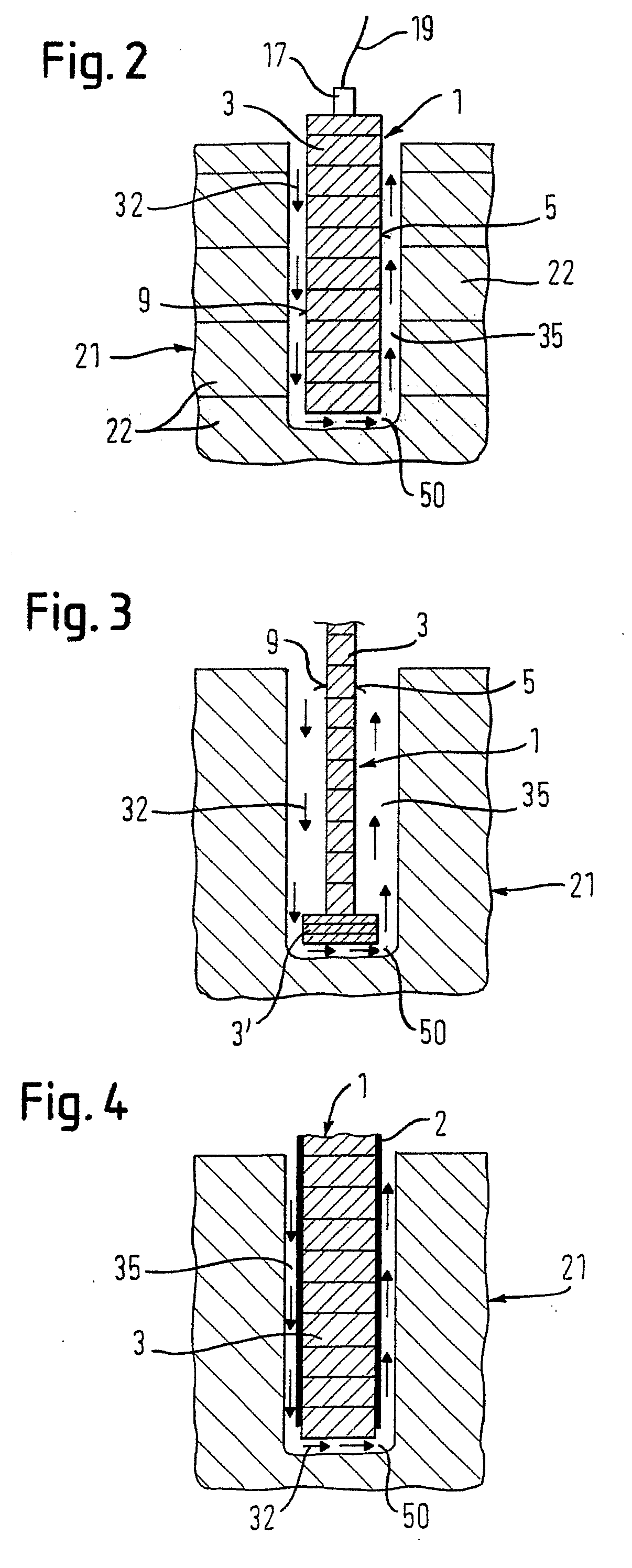Method for Electro-Chemical Processing of a Work Piece and Electrode for Such a Method
a work piece and electrochemical processing technology, applied in the direction of machining electrodes, electrical equipment, electric-based machining apparatus, etc., can solve the problems of electrode wear and tear, small and complex work piece surfaces that are not producible or only in a relatively cost-effective manner, electrodes are subjected to material wear and tear, etc., to increase the flushing effect, and increase the effect of material removal precision
- Summary
- Abstract
- Description
- Claims
- Application Information
AI Technical Summary
Benefits of technology
Problems solved by technology
Method used
Image
Examples
Embodiment Construction
[0053] A first exemplary embodiment of the present invention is explained in more detail in the following with reference to FIG. 1. The stereo-lithography process utilized herein is purely exemplary and can be replaced by other above-mentioned layered-construction processes.
[0054] As is shown in partial step I of FIG. 1, an electrode body 1 is constructed in layers in a known manner in a RP-machine (rapid prototyping) in a liquid synthetic material bath 11. For this purpose, the desired cross section of layer 3 of electrode body 1 is fabricated using a laser 15 that is, in the view illustrated in FIG. 1, movable in the horizontal plane and is also height-adjustable. The laser 15 is moved in the horizontal plane according to the desired contour and a part of the synthetic material layer 13 of the liquid synthetic material 11 is exposed with appropriate illumination and is thus cured. Consequently, arbitrary contours and layer shapes 3 can be fabricated.
[0055] As soon as the desired...
PUM
| Property | Measurement | Unit |
|---|---|---|
| conductive | aaaaa | aaaaa |
| voltage | aaaaa | aaaaa |
| metallic | aaaaa | aaaaa |
Abstract
Description
Claims
Application Information
 Login to View More
Login to View More - R&D
- Intellectual Property
- Life Sciences
- Materials
- Tech Scout
- Unparalleled Data Quality
- Higher Quality Content
- 60% Fewer Hallucinations
Browse by: Latest US Patents, China's latest patents, Technical Efficacy Thesaurus, Application Domain, Technology Topic, Popular Technical Reports.
© 2025 PatSnap. All rights reserved.Legal|Privacy policy|Modern Slavery Act Transparency Statement|Sitemap|About US| Contact US: help@patsnap.com



